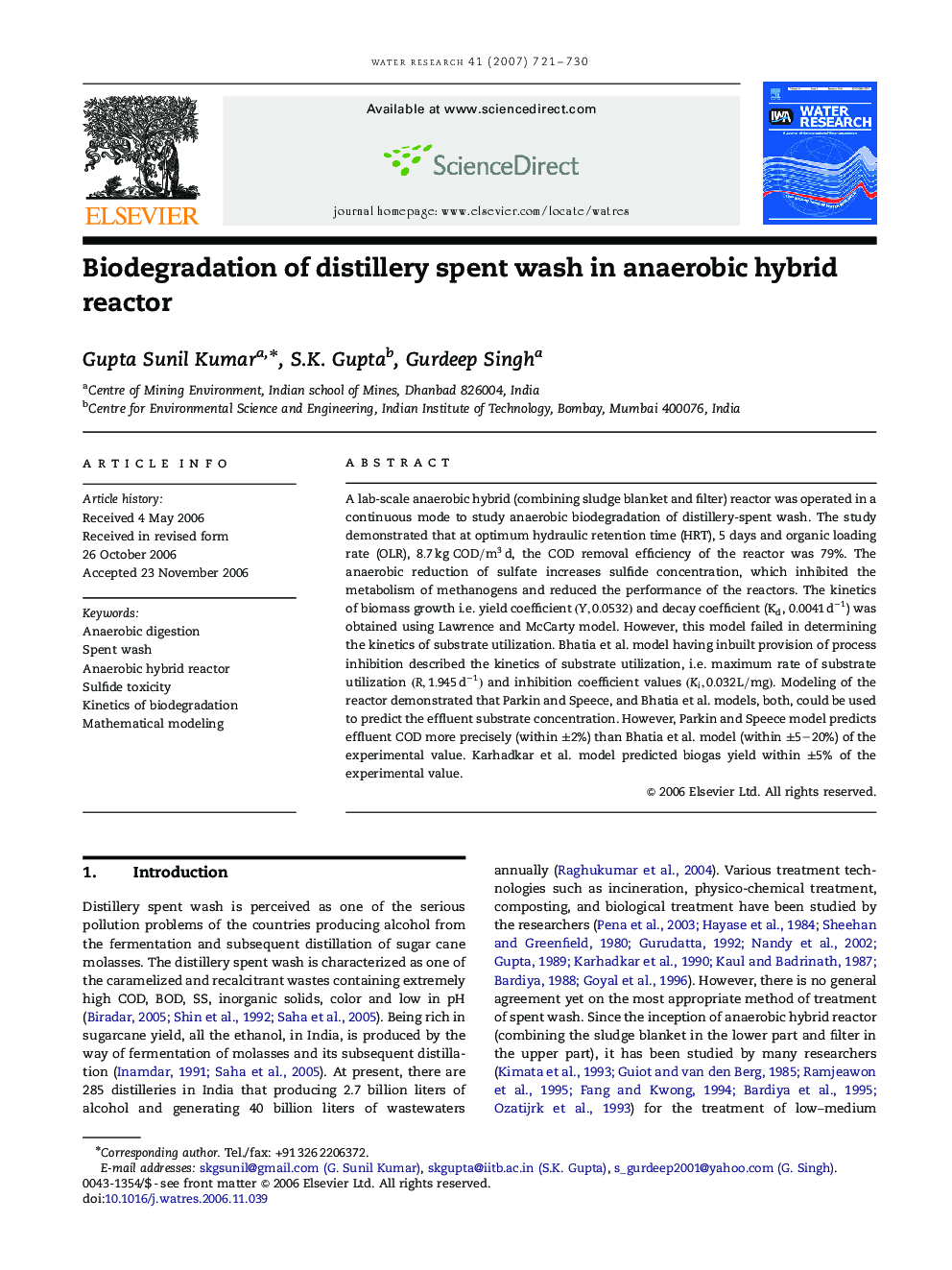| Article ID | Journal | Published Year | Pages | File Type |
|---|---|---|---|---|
| 4485530 | Water Research | 2007 | 10 Pages |
A lab-scale anaerobic hybrid (combining sludge blanket and filter) reactor was operated in a continuous mode to study anaerobic biodegradation of distillery-spent wash. The study demonstrated that at optimum hydraulic retention time (HRT), 5 days and organic loading rate (OLR), 8.7kgCOD/m3d, the COD removal efficiency of the reactor was 79%. The anaerobic reduction of sulfate increases sulfide concentration, which inhibited the metabolism of methanogens and reduced the performance of the reactors. The kinetics of biomass growth i.e. yield coefficient (Y,0.0532)(Y,0.0532) and decay coefficient (KdKd, 0.0041d-1) was obtained using Lawrence and McCarty model. However, this model failed in determining the kinetics of substrate utilization. Bhatia et al. model having inbuilt provision of process inhibition described the kinetics of substrate utilization, i.e. maximum rate of substrate utilization (R,1.945d-1) and inhibition coefficient values (Ki,0.032L/mg). Modeling of the reactor demonstrated that Parkin and Speece, and Bhatia et al. models, both, could be used to predict the effluent substrate concentration. However, Parkin and Speece model predicts effluent COD more precisely (within ±2%±2%) than Bhatia et al. model (within ±5–20%±5–20%) of the experimental value. Karhadkar et al. model predicted biogas yield within ±5%±5% of the experimental value.
